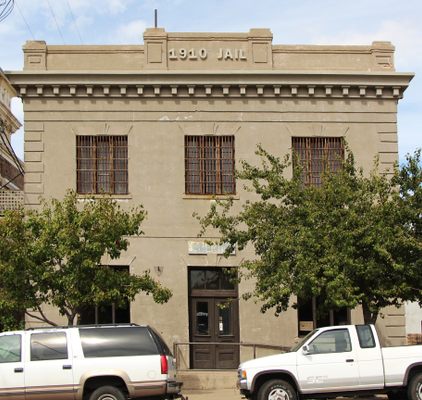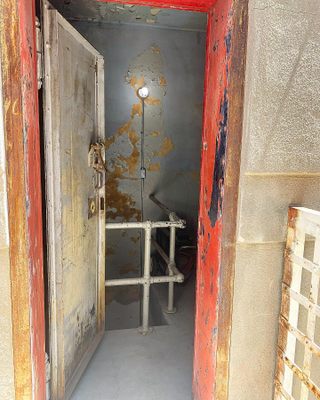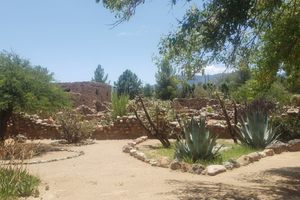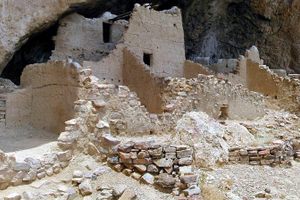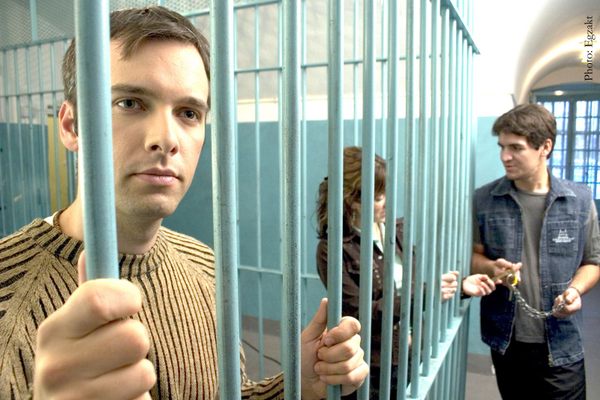About
These days, Globe, Arizona is a quaint, rural outpost with a handful of antique shops, restaurants, and bars—a charming, one-movie-theater type of town. This wasn’t always the case, however. At one point in time, Globe was a veritable “Wild West” town, replete with all the stagecoach robberies, gunfights, and debauchery that often accompanied life on the frontier. When law and order found Globe, the methods of incarceration were still questionable at best, a fact plainly proven at the 1910 Gila County Sheriff's Office and Jail.
In operation until 1981, the jail turned museum retains decades of prisoners’ etchings, including names, dates, symbols, and colorful expressions. The steel cell locking mechanism—allegedly hauled in by mule from Yuma, AZ—was restored to full working order, such that visitors on guided tours can experience (very temporary) lockdown if they so wish. To fully appreciate the role this century-old jailhouse played in Globe, however, it’s important to take a quick look at why the building itself was needed.
The land here, originally named besh-ba-gowah, or “place of metal” in Apache, drew settlers westward to mine its abundance of silver and copper deposits. From the time of its founding in 1876, Globe’s mining operations and population steadily swelled across the turn of the century, growing from 2,000 in 1890 to 16,000 in 1910. Given its remote location and proximity to the San Carlos Indian Reservation, Globe became something of an outlaw town, its residents alternately exchanging violence with neighboring Apaches and one another in typical Wild West fashion (the old Globe cemetery is packed with infamous outlaws of yesteryear, from Phin Clanton to Edwin Tewksbury). Those convicted were initially jailed in Globe’s 1888 courthouse basement, though it quickly became overcrowded. A new courthouse built in 1906 also overflowed in short order (for added context, Globe only stopped using the town Hanging Tree when it caught fire in 1894).
The original jailhouse built in 1910 was meant to be a solution to Globe’s dire incarceration situation. For inmates considered less of a security risk, the jail allowed a “Trusties” system, whereby select inmates could leave during the day to work jobs and return to the jail at night. They could not drink, visit their families, or deviate from their commute. They occupied the more spacious third floor of the jail, sleeping on army cots instead of the steel webbed beds seen in lower floors.
For those outside the Trusties system, however, conditions at the jail grew increasingly unsatisfactory with time. There was no heating or cooling in the building, despite searing summer highs and frigid winter lows common to any desert environment. To make matters worse, while each cell initially had its own sink and toilet, they were removed in the 1950s due to increased vandalism, leaving around 28 prisoners to one functioning bathroom. And while initially built to house 35 inmates, the population, like its predecessors, quickly exceeded that number, creating a cramped, miserable existence for prisoners here.
In the 1970s, regional newspapers exposed the deplorable conditions therein, leading the jail to finally shutter in 1981. The vacant jail fell into disrepair through the 1990s until it was preserved as the historical facility you can visit today. Just be thankful you can leave on your own accord.
Related Tags
Community Contributors
Added By
Published
January 2, 2023
Sources
- https://www.niche.com/places-to-live/globe-gila-az/reviews/
- https://www.globe-arizona.com/history/
- http://azarchivesonline.org/xtf/view?docId=ead/asu/cp_spc_9.xml&doc.view=content&brand=default&anchor.id=0
- https://www.onlyinyourstate.com/arizona/az-haunted-jail-tour/
- https://www.globemiamitimes.com/prison-life-view-old-jail/
- https://www.oldprisons.com/in-globe-arizona-a-1910-jail-built-for-a-tough-town-is-open-for-tours/
